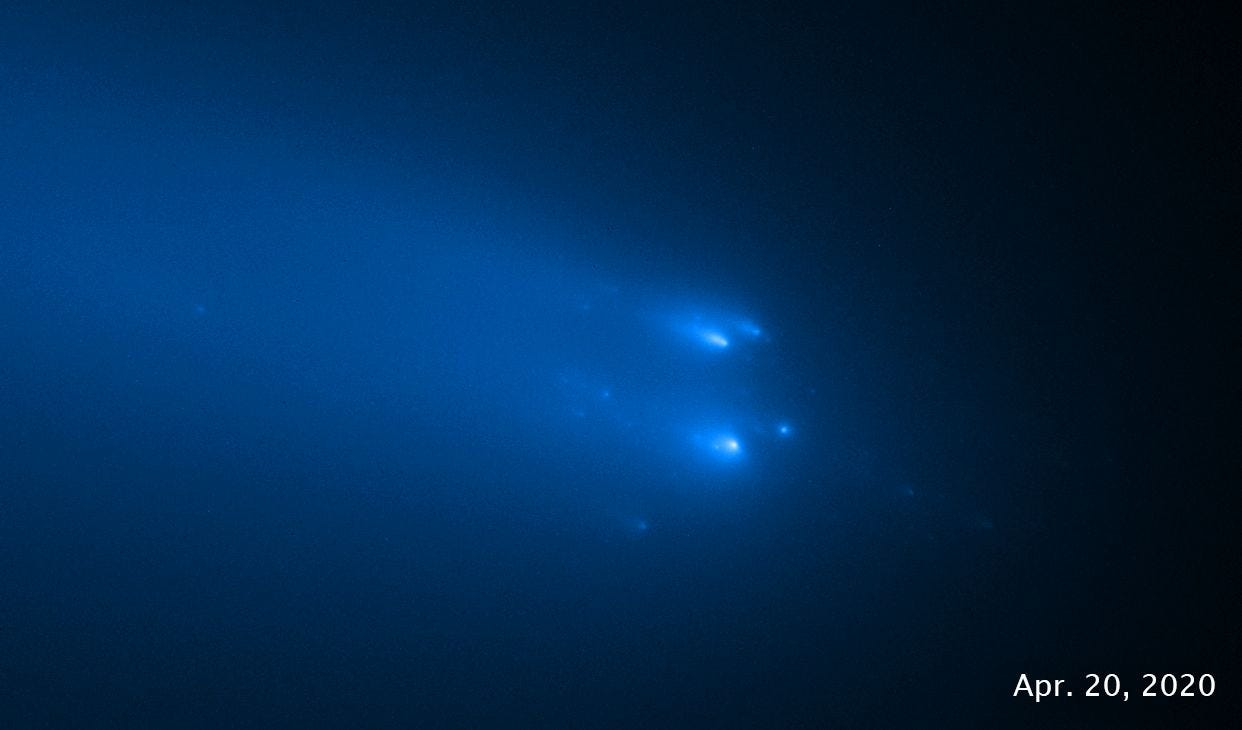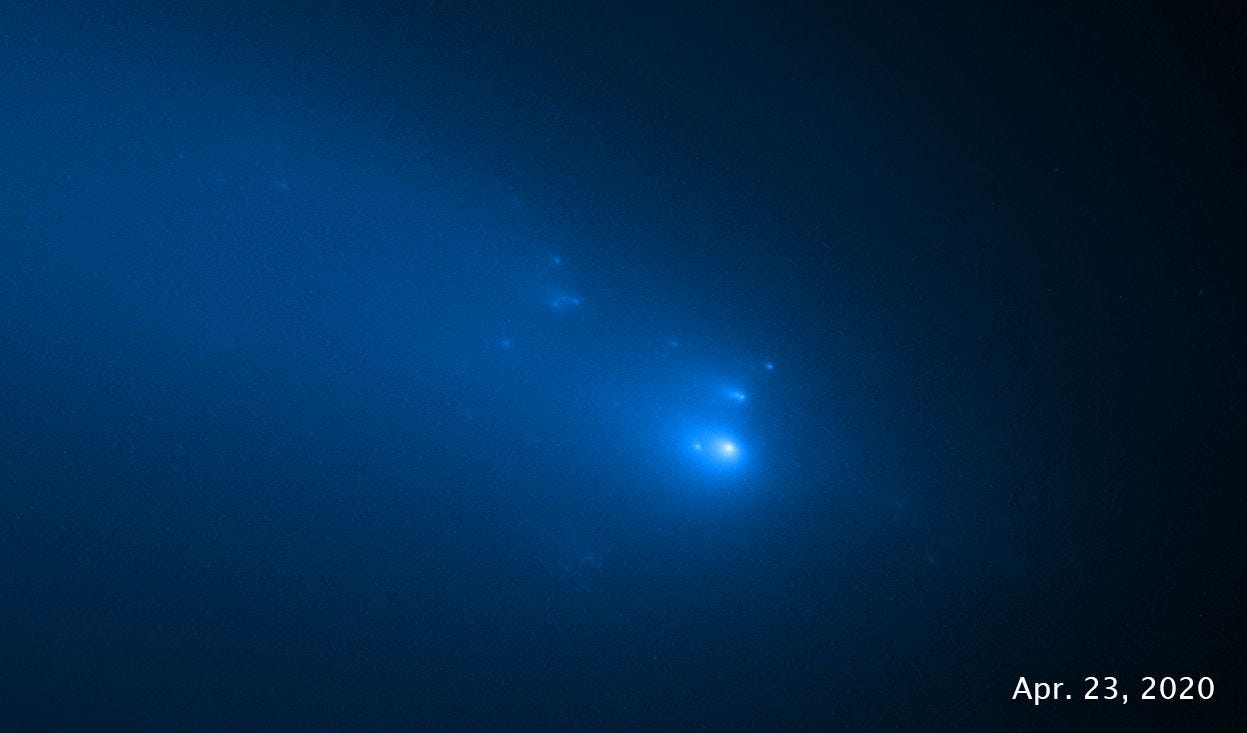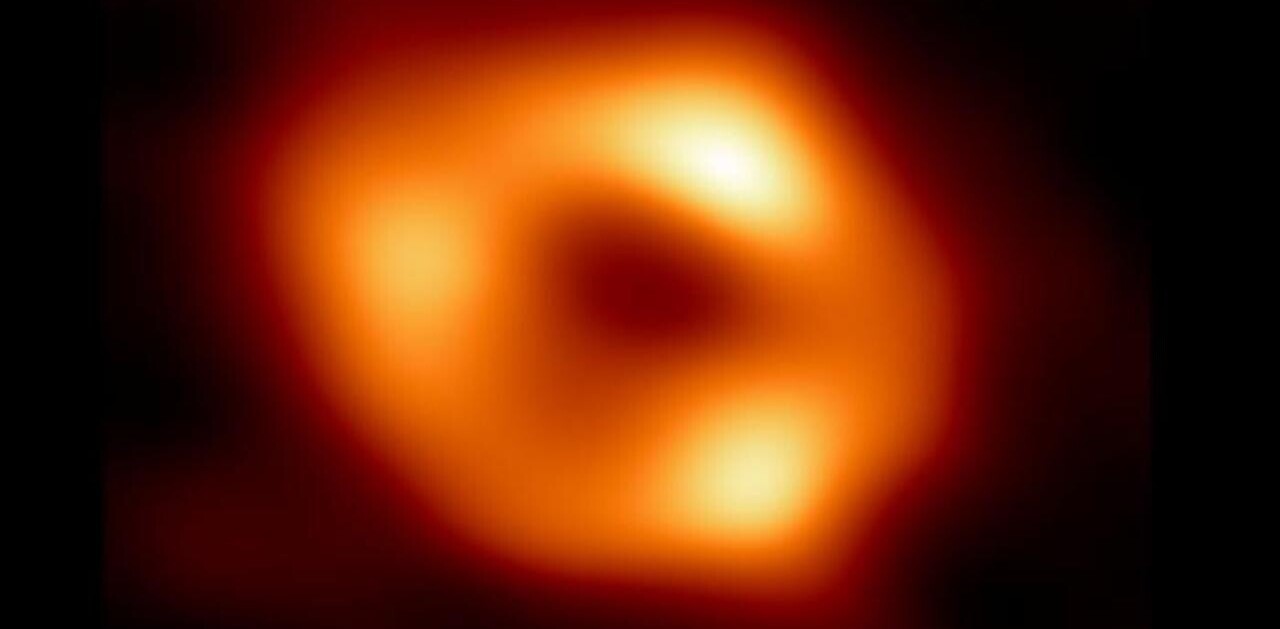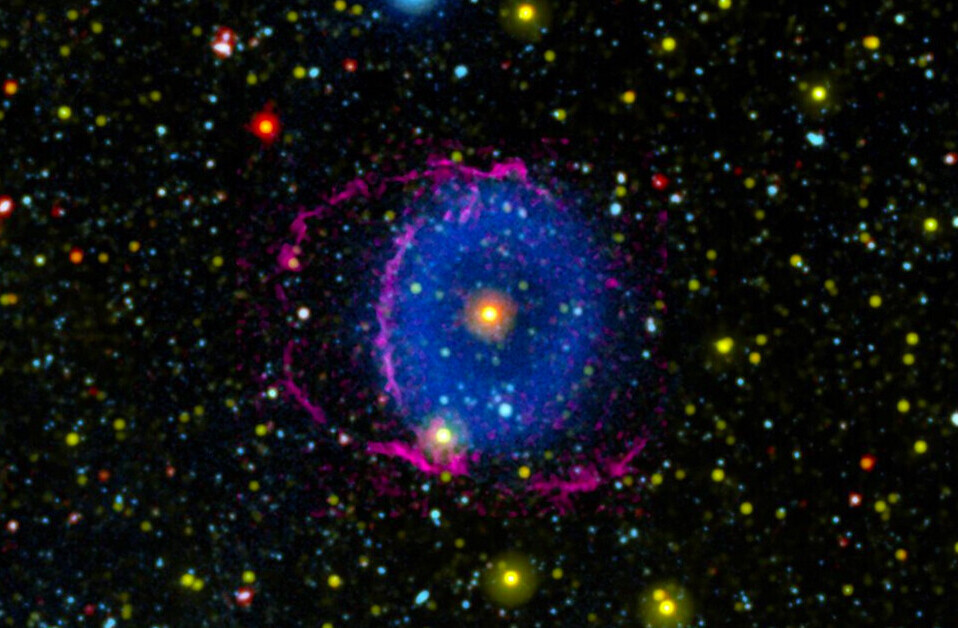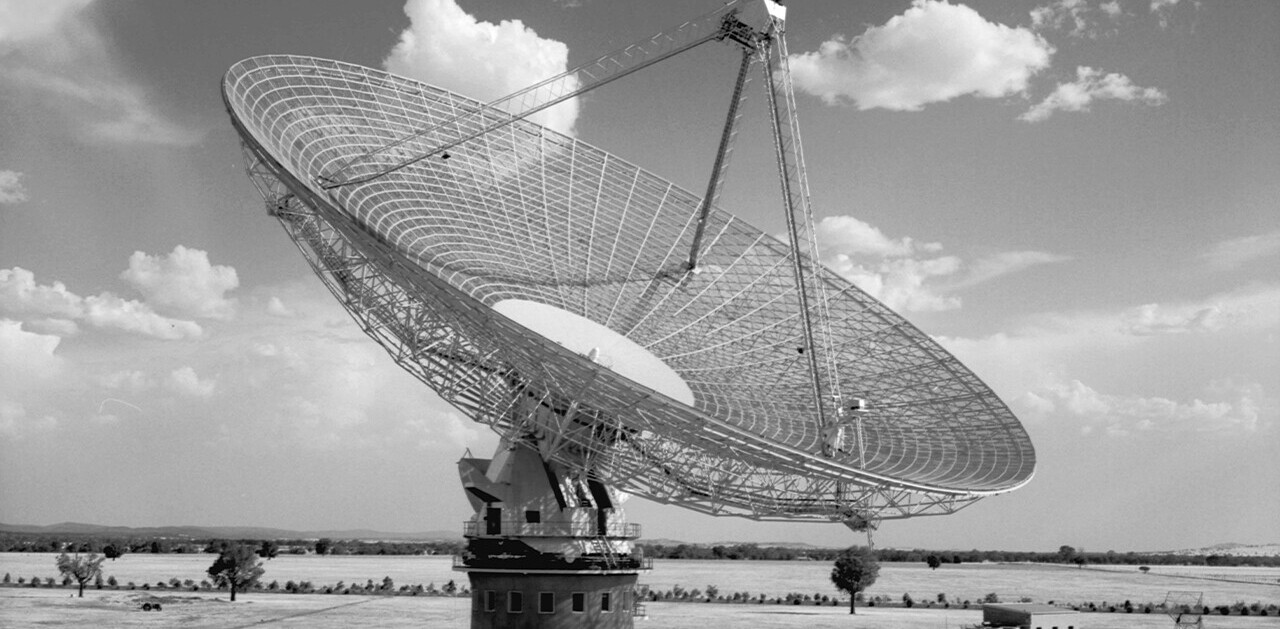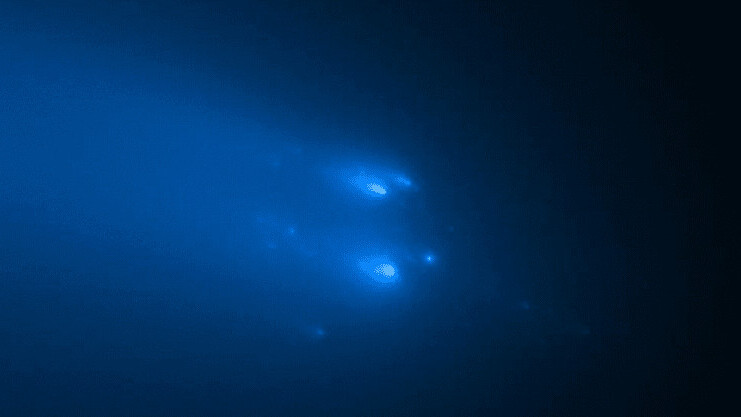
Comet Atlas was once shaping up to be the brightest comet seen from the northern hemisphere since comets Hale-Bopp and Hyakutake in the mid 1990’s. Now, the comet has completely broken up, shattering into dozens of massive pieces.
Fortunately, the Hubble Space Telescope trained its eye on the head of the comet on April 20 and the 23rd as the spaceborne iceberg broke apart. The first image showed 30 fragments where the nucleus (main body) of the comet should have been found. The second observation showed 25 pieces of ice and rock, each the size of a typical house or larger.
“Their appearance changes substantially between the two days, so much so that it’s quite difficult to connect the dots. I don’t know whether this is because the individual pieces are flashing on and off as they reflect sunlight, acting like twinkling lights on a Christmas tree, or because different fragments appear on different days,” said David Jewitt, professor of planetary science and astronomy at UCLA, leader of one of two teams that photographed the remains with Hubble.
Before it broke up, the comet (official name: C/2019 Y4 (ATLAS)) was thought to be as much as 200 meters (660 feet) in diameter.
Breaking up is (apparently) easy to do
Although this comet fell apart, the event still served to teach astronomers about a process they do not often see in such detail.
“This is really exciting — both because such events are super cool to watch and because they do not happen very often. Most comets that fragment are too dim to see. Events at such scale only happen once or twice a decade,” said Quanzhi Ye, astronomer at the University of Maryland, College Park.
Although astronomers are uncertain why the comet broke up, outgassing — the release of gas produced during the heating of the icy body as it approached the Sun — likely fragmented the body.
This could show that such ends are common for comets, and further study of the Hubble observations could reveal details of how that comet met its end.
The comet was first seen by astronomers using the ATLAS (Asteroid Terrestrial-impact Last Alert System) robotic astronomical survey system in Hawaii.
After several months of vigorous brightening, and rising dreams, began to fall apart. The first image of the comet coming apart came on April 11 when amateur astronomer Jose de Queiroz photographed Atlas as it started to fracture, tearing apart into three pieces.
Whatever remains of the shattered comet will make their nearest approach to Earth on May 23, passing our planet at a distance of 116 million kilometers (72 million miles). Just eight days later, the icy fragments will come within 40 million km (25 million miles) of the Sun.
And so ends the journey of Comet Atlas.
This article was originally published on The Cosmic Companion by James Maynard, founder and publisher of The Cosmic Companion. He is a New England native turned desert rat in Tucson, where he lives with his lovely wife, Nicole, and Max the Cat. You can read this original piece here.
Astronomy News with The Cosmic Companion is also available as a weekly podcast, carried on all major podcast providers. Tune in every Tuesday for updates on the latest astronomy news, and interviews with astronomers and other researchers working to uncover the nature of the Universe.
Get the TNW newsletter
Get the most important tech news in your inbox each week.
